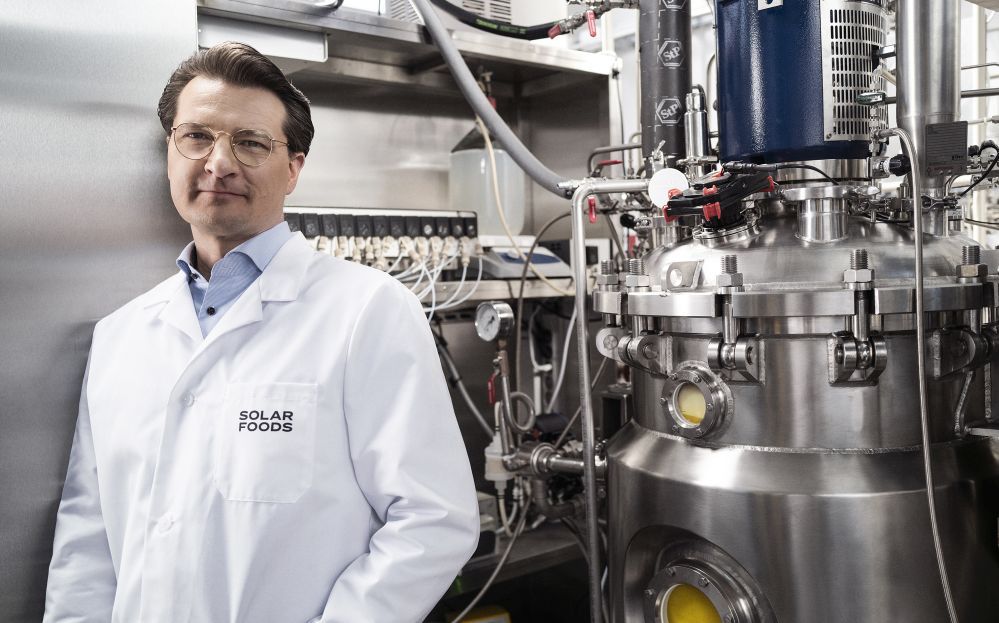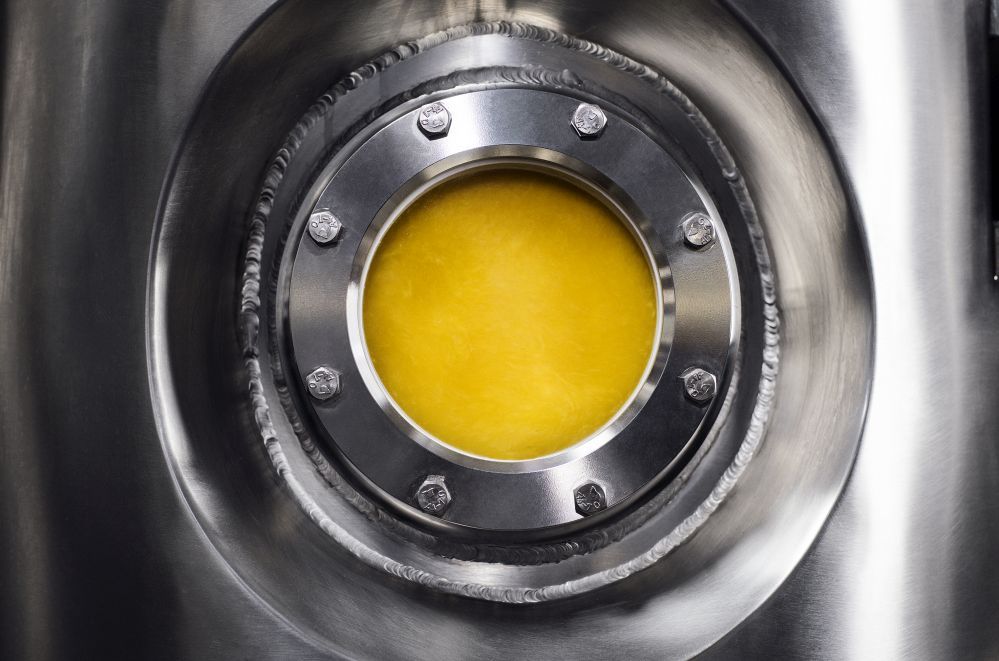Finnish startup Solar Foods—which makes a yellow, protein-packed ingredient called Solein by feeding microbes elements from the air—has raised €8 million ($8.8 million) in a Series B round carried out through the Finnish-based investment group Springvest.
Existing investors including Happiness Capital, Lifeline Ventures, VTT Ventures and Fazer Group also participated in the round via a private placement, according to a November 16 filing from Agronomics, a listed company investing in firms in the cellular agriculture space.
According to the filing, Agronomics has invested €6 million in Solar Foods via a €3 million ($3.3 million) investment in its series A round in September 2020 and €3 million ($3.3 million) in the form of a pre-Series B Convertible Promissory Note in October 2021.
Solar Foods, which was founded in 2017 as a spinoff from VTT Technical Research Centre of Finland and LUT University, will use the capital injection to ramp up production at its demonstration facility (‘Factory 01’) near Helsinki, which is set to become operational in the first half of 2024 with a capacity of 120 tons/year.
According to Solar Foods, “The oversubscription, the still-growing waiting list and the funding round reaching its maximum target sooner than expected are all outstanding news for us. The success of this round leads us to think about how a new similar opportunity should be arranged, including an opportunity for international participation.”

Gas fermentation: Decoupling food production from agricultural land
One of a small, but high-profile group of startups attempting to decouple food production from agricultural land, Solar Foods uses carbon dioxide and hydrogen instead of sugars to feed its bacteria.
Assuming the energy-intensive parts of the process are powered by renewables, says the firm, the technology has clear environmental benefits over animals for protein production: lower emissions, reduced water and land use, and the ability to locate plants nearer to the end consumer.
Solar Foods secured novel foods approval for Solein in Singapore last year and hopes to be self-GRAS (Generally Recognized as Safe) in the US by next summer. It has submitted a safety dossier to EFSA (European Food Safety Authority) for EU approval as a novel food, and in the most optimistic scenario hopes to secure an opinion late next year.
A spokesperson added: “On May 30, Solar Foods and the Japanese food and biotechnology company Ajinomoto announced a strategic alliance that includes the development of products using Solein and a marketability study in Singapore, set to begin on Q1 2024.”
‘Electricity is about half of our production costs’
Speaking to AgFunderNews in September, cofounder and CEO Pasi Vainikka said: “PV: Based on the process we have today, we believe we are already cost competitive against whey, pea, and soy protein isolates if we operate at large commercial scale, which would be thousands or potentially tens of thousands of tons per year.”
Asked about rising electricity costs, he said: “Electricity is about half of our production costs, mostly for the electrolysis process. So yes, the viability of our process depends on which country you are in and what type of electricity market it has, so you need an efficient electricity market where you operate.”
According to Vainikka: “The front end of the factory is similar to an oil refinery, the middle part is like a brewery, and the downstream part is like dairy.
“Our fermenter is like a big SodaStream. The main feedstocks are carbon dioxide gas, hydrogen gas, some oxygen and then some nitrogen in the growth media, water solution ammonia, and then some nutrients that plants typically take through roots.”
He added: “We use electrolysis to get the hydrogen [using electricity to split water into its constituent parts, hydrogen and oxygen], which we bubble through our fermenter using pipes. Right now we source liquefied carbon dioxide, which you can get from different industrial sources.
“But we also source about 10-20% [of the C02 used in the production process] from a direct air capture device connected to our ventilation system at our headquarters, so when we exhale C02, we use that as a feedstock for our production as well to demonstrate we’re making food out of thin air. But of course there’s a whole direct air capture industry developing, so we are candidate customer for that.”
‘The broader question in this market is how does this industry scale?’
Prior to the series B, Solar Foods had raised about €35 million ($37.3 million) in equity and about €30 million ($32 million) in debt financing and sale and lease back agreements for the demo factory, plus grants, including an IPCEI [Important Projects of Common European Interest] grant as a ‘clean hydrogen’ company, said Vainikka.
“We have a €34 million ($36.2 million) IPCEI grant at our use for factory 01 and a further €76 million ($81 million) is earmarked for factory 02 [a large-scale commercial facility] if we were to build on European soil.”
Asked how investors were viewing Solar Foods’ technology, he said: “I think the broader question in this market is how does this industry scale? The IPO market is closed. The VC market is what it is and even if it was good, they don’t really like [spending money on] concrete and steel. And then the strategics are not really in the game yet big time, so if we think of changing the food system with fermentation, how that will become impactful and how that will unfold during the remainder of this decade is really an interesting question.”




